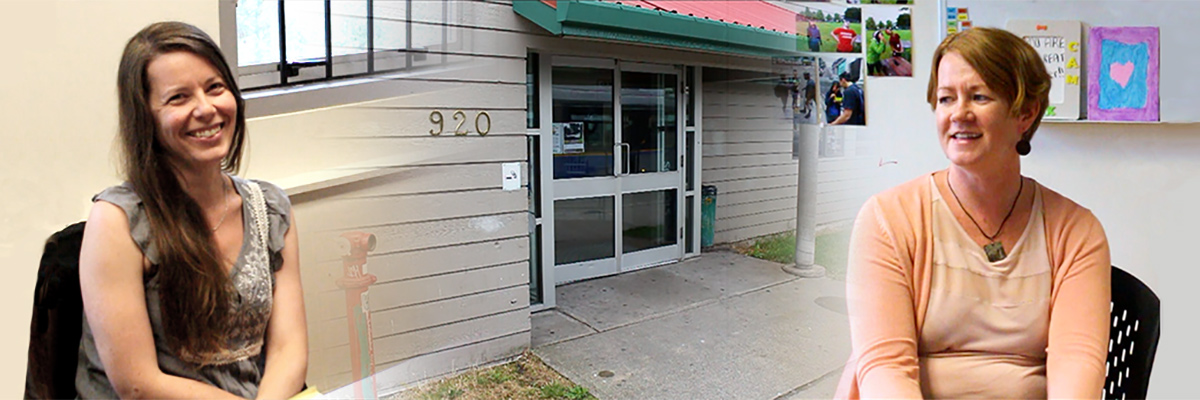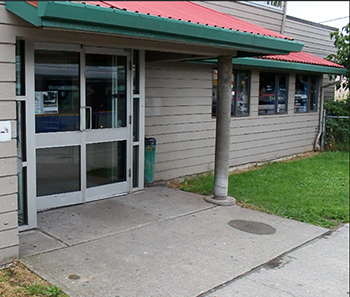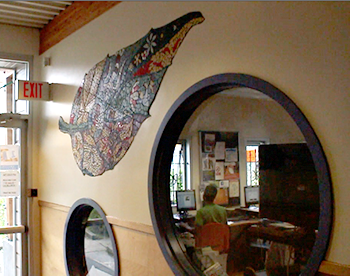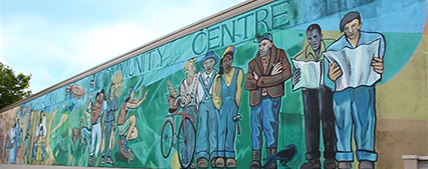
Building Trust in Communities
Community engagement is about building trust between communities. This summer we sat down with Kate Hodgson and Kathleen Leahy to learn firsthand from their years of experience…

Kate Hodgson
Coordinator at Ray-Cam Co-operative Centre

Kathleen Leahy
Director of the UBC Learning Exchange
Key Learnings
- There is a general and positive shift among researchers who are moving from saying ‘we’re going to fix all your social problems’ to ‘what can we do for you and to work with you?’
- More and more, research is starting to implement solutions hand-in-hand with the community while capturing evidence, thereby having an impact on policies and outcomes.
- Building relationships through existing connections, for example through the Learning Exchange, is a good way to build trust.
- It’s important for researchers and students to take the time and be committed to listening first.
Can you give an example of a successful community-university engagement you’ve been involved in?
Kate: One great research example of community engagement from UBC was working on the Vancouver Rent Bank Project. This was an idea that was grown in the community to help residents deal with small arrears in their rent that were resulting in them getting eviction notices. If we implemented a rent bank, which would allow people to have very small loans to deal with rental arrears so that they weren’t evicted, we could prevent homelessness in their community. This is a really positive example of Ray-Cam working with the Learning Exchange, which connected groups here with the School of Economics at UBC.
The Learning Exchange worked for a year with them [Ray-Cam, UBC School of Economics] on building evidence to take this small, grassroots, community-started pilot, and show using both demographics and economic analysis that if this was implemented across the city of Vancouver, it could actually have an impact on preventing evictions and homelessness.
The Learning Exchange worked for a year with them on building evidence to take this small, grassroots, community-started pilot, and show using both demographics and economic analysis that if this was implemented across the city of Vancouver, it could actually have an impact on preventing evictions and homelessness. This would save the system a lot of money in terms of landlords not having to evict people, and from preventing people from having to go into shelters.

Working with Catherine Douglas (UBC School of Economics) we were able to actually implement this amazing project, and get funding from the city of Vancouver, Street to Home Foundation, and Vancouver Foundation to launch it as a citywide program. These kinds of things don’t happen unless there are the types of connections provided by the Learning Exchange, and researchers who get excited about these ideas and actually having a positive impact makes a huge difference. We’re in the 3rd year of this project and there are actual stats that UBC’s continuing to be a part of tracking every year. Things like, what’s the evidence, how many people have been prevented from being evicted, and how many people have been able to pay back loans they wouldn’t have otherwise been able to pay back. So it’s a pretty exciting project…
What is the value of university research in your community?
Kate: For us the value of research is when people come in wanting to work alongside to actually have an impact on changing some of those policies and outcomes for residents. The neighbourhood is not a place to drop into, do some research, go away again and never give back. I think that’s historically what’s happened. The really positive things that have happened lately have been working with the [UBC] School of Economics and the School of Nursing. They are doing some really collaborative, on the ground projects that work differently and actually help the community build evidence around things that they know need to change. They help the community provide services at the same time as there’s research being done to capture the impact of those services…
…What’s been exciting about working on a couple of the projects has been that these are actually going to result in actual changes on the ground for people. Whether that’s primary health care, or in terms of leveraging resources, or actually capturing in an evidence-based model the impacts on the ground. We want to see that research results in policy change and actual improvements we can point to in the neighbourhood… The really great examples have led to policy changes, services being delivered differently, or actual shifts in legal decisions around how things are happening in the community. That’s more of what we mean in terms of research and engagement…
What challenges do you face in making connections between community and university?
Researchers are asking, “what can we do for you and to work with you? How can we use the resources of the institution to have a positive impact on the community?”
Kate: The challenge in working with academic institutions is that sometimes the research results, or how the research is focused is very theoretical. The research that’s useful for the community needs to capture evidence that can actually impact policy changes in the community. This neighbourhood is incredibly impacted by policy, and a lot of bad policy. For us the research isn’t meaningful unless there’s some kind of tangible impact that it can have on the community. It should inform policy change, whether that’s a government policy, funder’s policy, or how services are delivered within and amongst our network of organizations.
…If researchers are coming into the community with pre-existing ideas or a pre-existing project that hasn’t been informed by the community, if they don’t ask “what can we do to work with you?”, the reaction of the neighbourhood is a lot of suspicion and a lot of resistance. There’s the feeling that once again we’re going to be “used” so to speak. This neighbourhood has a history of being impoverished, and of experts coming in telling them how “we’re going to fix all your social problems.” Whether it’s government, a university, or another institution, this approach doesn’t go very far and doesn’t result in research that’s very useful for the community or the organization working with it. What’s been interesting here is that this neighbourhood is slowly building up that trust to work with researchers and professors to be able to sit down with their ideas. Researchers are asking, “what can we do for you and to work with you? How can we use the resources of the institution to have a positive impact on the community?”
Our bottom line here is do no harm. Coming in with pre-existing notions, or pre-existing ideas of research and what they’re going to fix through that research, is historically what has happened and that actually does cause a lot of harm.
How do you get started, what do you need to think about when beginning a project?

Kate: When someone is first starting off and wants to engage with the community, it’s important learn who’s already on the ground from your own institution. Find out who’s working in a positive way and trusted by residents in the community – researchers that have a lot of cache, longevity, and trust. Take time with them and get introduced to the community through those existing relationships… To us, UBC is this very large institution with so many different pieces to it, it’s helpful to have the Learning Exchange as this community base where we can try to piece together all those disparate parts of UBC in one place.
Residents need to have some democratic control and be involved as citizens in what happens in their community on the government and funding level. This holds true for research in the community as well.
Kathleen: Part of the role of the Learning Exchange that community members, residents, and community partners consider really important is that it can be that conduit. Because we have community based programs, we already have a stake in the community. We’re already interacting with community members, we’ve already started to understand what some of the promising practices of that work are. We’re a place where community partners can come and say “I want to find this at UBC, who is that person, how do we work with them?” We may have some information about that, or we may play the role of contacting the researcher, professor, or student group at the university and starting that conversation.… That’s a role that our unit would play – bridging that divide that sometimes exists.
Kate: Beyond that, spend some time on the ground. I always advise people that want to contribute to the neighbourhood to take time to volunteer and see where they fit. Spend time, see where you’re needed, and see where you get interested and excited about working with people.
Residents need to have some democratic control and be involved as citizens in what happens in their community on the government and funding level. This holds true for research in the community as well. If you’re going to be involved with and engaged in the community, you’re working alongside people and residents to actually have a positive impact on the community.
We use a community development approach because there’s a wealth of assets, community expertise and knowledge here that needs to be recognized but also leveraged and captured in a way that we can have an impact on policy. This neighbourhood has been the victim of a lot of really bad policy and bad policy making…
How would a student begin building trust and credibility in a community?
Listening sounds like an easy thing to do, but it’s not. You have to take the time and really be committed to that phase. That can take months, it’s not one meeting.
Kathleen: Sometimes at the UBC Learning Exchange students will come to us and say “I want to give back and I want to do something in the community.” The feedback Ray-Cam has given over the years is that it is important to first have students come, spend time and help with what the community has identified as important. Sometimes students want to skip that, they want to go straight to the piece of research that they’re interested in, or something that they’re passionate about. That too is important, but they need to take the time to build that credibility and build up that trust because they’re an unknown. They’re basically a stranger. We support students to do that, and prepare them for a place like Ray-Cam by allowing them to spend time here working with the community, first.
Students should spend the time to get to know the community and really listen first. It’s important too that they suspend some of their knowledge and expertise. It will come into play and be useful at some point, but really wait, see, and listen first. Listening sounds like an easy thing to do, but it’s not. You have to take the time and really be committed to that phase. That can take months, it’s not one meeting. It’s taking the time to really listen.
What does real community collaboration look like?

Kate: The idea of community engagement when you’re looking from the academy into the community might seem simple or straightforward, but it’s a process. It doesn’t involve just one person, it involves a range of service providers, residents and community groups, and working in that really complex context. It takes a lot of time to build that collaboration.
At Ray-Cam we use the idea of community capacity building and community development model, and for us that means relationships. So as much as building relationships holds true for frontline workers, that holds true for researchers coming into the neighbourhood. They have to take the time to build relationships and build that trust.
Whatever happens in terms of research within the community, it has to have the residents informed and having some kind of say on how that research is used. You can only have that back and forth and that agreement on what’s going to go forward if you have that trust so that residents feel that they do have some power. The power differential is huge for institutions and community members.
Often for a lot of the groups here, there are some very real consequences for not cooperating with an institution doing research, such as not getting funding, not being seen as cooperative, or not benefiting from those resources. It takes a lot of courage for community groups to say “no we won’t do that. We want to be involved but it has to be done this way,” and hold to those principles on behalf of residents in the community. So those are some of the things that Ray-cam and the community here has held really close to. Because of that process, we’ve been able to have nurse practitioners work in the community alongside a research project that’s developed. So that’s actually providing a service and having an impact where there’s primary healthcare being delivered to children and families – something that wasn’t happening before. That service worked alongside a research process. There are some real tangible things that happened to the community, and some actual positive health outcomes for people. Instead of coming once again to the community and saying, “this is what’s wrong”, they actually tried to implement a solution hand in hand with the community and capture evidence at the same time.
To learn more about Ray-Cam or the Learning Exchange, visit www.raycam.org or www.learningexchange.ubc.ca.